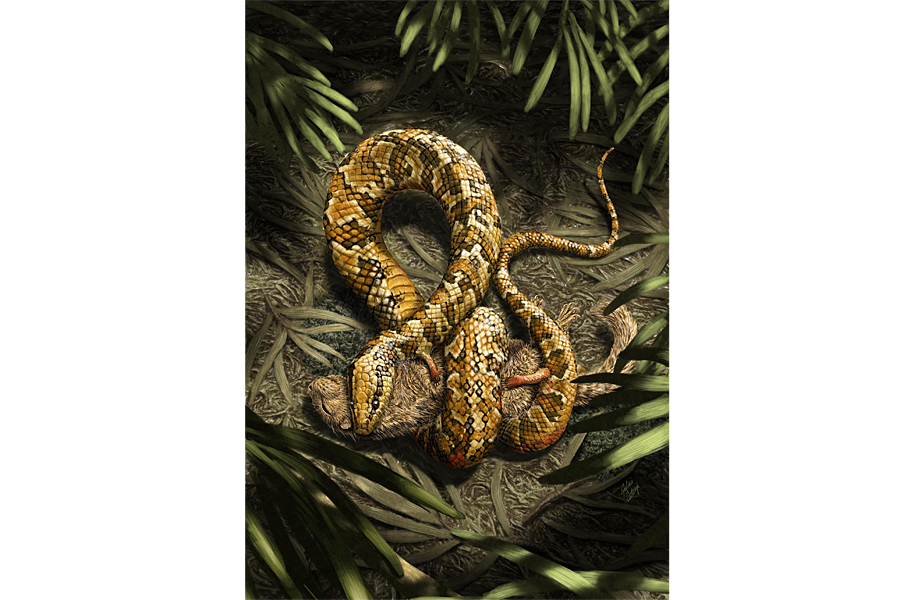How an ancient snake grasped prey: With its ... four legs
These feet weren’t made for walking.
They were, however, made for grasping. Researchers say a newly discovered snake species may have used its four limbs to snag prey or grapple with mates. The new species, Tetrapodophis amplectus, was discovered in Brazil’s Crato Formation and described in the journal Science on Thursday.
According to co-author and University of Bath paleontologist Nicholas Longrich, T. amplectus lived during the Early Cretaceous, between 146 and 100 million years ago. Notable for its unusual set of four limbs, the skeleton was hailed by researchers as being "insanely complete."
"Every bone from the nose to the tail," Dr. Longrich told the Monitor. "Parts of the skull are missing, but the other side is buried in the rock. Hopefully a CT scan will uncover those."
So isn't this just an ordinary lizard? No – snakes and lizards are differentiated by skull shape and other anatomical features, not by the presence of limbs. Snakes, unlike lizards, do not possess eyelids, and lizards have external ears, while snake ears are internal. So while T. amplectus may look like a lizard, it is more closely related to modern snakes.
"If the limbs were useless vestiges, we would expect them to be a reduced and simplified version of a lizard’s limbs," Longrich says. "If they were for burrowing, they should be stout and powerful like a mole’s. Instead, they have very long, skinny fingers with the last bone in the finger being extremely elongate. That's typical of animals that use their digits for grasping."
Paleontologists have long debated whether early snakes had terrestrial or marine origins. According to Longrich, T. amplectus was probably not much of a swimmer.
"It has a long trunk and a short tail, as do burrowing lizards," Longrich says. "The vertebrae are low and broad, which is typical of burrowers. But it wasn't exclusively a burrower. It was preying on small amphibians and reptiles, and you don't find many of them underground. But it has the hallmarks of a burrowing lifestyle, so it appears to be descending from a burrowing lizard."
Researchers say this new finding could improve our understanding of snake evolution. For example, the discovery suggests that snakes may have originated on the supercontinent Gondwanaland, Longrich says.
"It tells us a number of things," Longrich says. "Snakes evolve from burrowers, not marine animals. Early snakes were carnivores and constrictors – constriction seems to be primitive for snakes, not advanced. And after they stopped using the limbs for walking, they used them to constrict."







